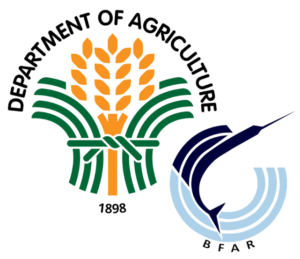Bureau of Fisheries and Aquatic Resources
Philippine government agency responsible for the development, improvement, management and conservation of the country’s fisheries and aquatic resources. It was reconstituted as a line bureau by virtue of Republic Act No. 8550 (Philippine Fisheries Code of 1998). The bureau is under the Department of Agriculture.

Mission
“To ensure sustainable fisheries and aquatic resources by empowering fisherfolk towards productivity and resiliency”.
Vision
“An institution of excellence in sustainable fisheries management and innovative services contributing to the nation’s food security and improving fisherfolk quality of life”.
Strategic Objectives
Improve Sustainability– To lead the institutionalization of fisheries governance through Fisheries Management Areas anchored on Ecosystem Approach to Fisheries Management (EAFM) while implementing science-based policies, strict enforcement of fishery laws and regulations and wide stakeholder’s participation.
Improve Empowerment– To capacitate fisherfolk trough implementation of holistic, gender-responsive programs on fisheries technology, entrepreneurship, extension and digitalization towards global competitiveness.
Improve Productivity- To enhance productivity in the fisheries sector trough gender-responsive innovative technologies, market-driven programs and services.
Increase Resiliency- To implement programs capacitating the fishery sector to become climate-resilient and coping with the needs of time.
The Functions of the Bureau
Prepare and implement comprehensive National Fisheries Industry Development Plan;
Issue licenses for the operation of commercial fishing vessels;
Issue identification cards free of charge to fish workers engaged in commercial fishing;
Monitor and review joint fishing agreements between Filipino citizens and foreigners who conduct fishing activities in international waters and ensure such agreements are not contrary to Philippine commitment under international treaties and convention on fishing in high seas;
Formulate and implement a Comprehensive Fishery Research and Development Program, such as, but not limited to, sea farming, sea ranching, tropical/ ornamental fish and seaweed culture, aimed at increasing resource productivity improving resource use efficiency, and ensuring the long-term sustainability of the country’s fishery and aquatic resources;
Establish and maintain a comprehensive Fishery Information System;
Provide extensive development support services in all aspects of fisheries production, processing and marketing;
Provide advisory services and technical assistance on the improvement of quality of fish from the time is caught (i.e., on board fishing vessels, at landing areas, fish markets, to the processing plants and to the distribution and marketing chain);
Coordinate efforts relating to fishery production undertaken from the primary fishery producers, LGUs, FARMCs, fishery and organization / cooperatives;
Advise and coordinate with the LGUs on the maintenance of proper sanitation and hygienic practices in fish markets and fish landing areas;
Establish a corps of specialists in collaboration with the Department of National Defense, Department of Interior and Local Government and Department of Foreign Affairs for the efficient monitoring, control and surveillance of fishing activities within Philippine territorial waters and provide the necessary facilities, equipment and training thereof;
Implement and inspection system for import and export of fishery / aquatic products and fish processing establishments consistent with the international standards to ensure product quality and safety;
Coordinate with LGUs and other concerned agencies for the establishment of productivity-enhancing and market development programs in fishing communities to enable women to engage in other fisheries / economic activities and contribute significantly to development efforts;
Enforce all laws, formulate and enforce all rules and regulation governing the conservation and management of fishery resources, except in municipal waters and to settle the conflicts of resource use and allocation in consultation with the NFARMC, LGUs and local FARMCs;
Develop value-added fishery products for domestic consumption and export;
Recommended measures for the protection / enhancement of the fishery industries;
Assist the LGUs in developing their technical capability in the development, management, regulation conservation and protection of the fishery resources;
Formulate rules and regulation for the conservation and management of straddling fish stocks and highly migratory fish; and
Perform such other related functions which shall promote the development, conservation, management protection and utilization of fisheries and aquatic resources.
